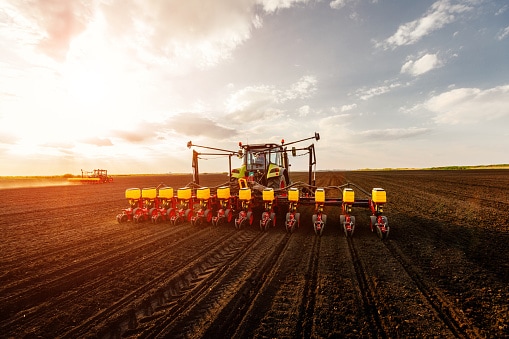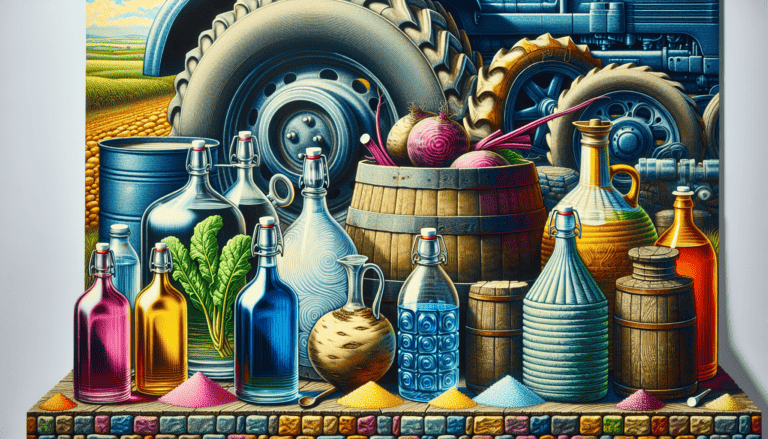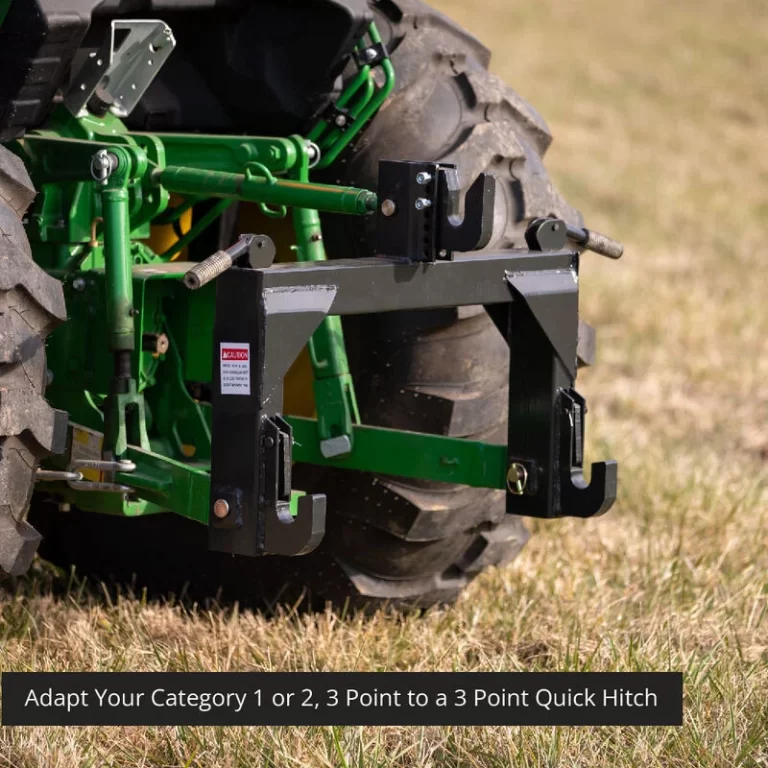Key Trends Shaping the Global Tractor Markets

Agriculture remains the backbone of countless economies around the world, and tractors are the workhorses fueling modern farming. As global populations increase and the demand for food skyrockets, the tractor market plays a pivotal role in ensuring agricultural productivity and efficiency. Understanding the trends in this market is essential for manufacturers, farmers, and investors alike.
The global tractor market is a dynamic force, with significant growth projections. In 2021, the market was valued at nearly $56 billion USD, and it’s anticipated to reach almost $69 billion USD by 2027. This impressive expansion reflects the increasing need for agricultural mechanization worldwide. Factors like rising food demand, government initiatives, and technological advancements are driving these remarkable changes in the global tractor market landscape.
Growing Demand for Food and Rising Farm Productivity
The fundamental link between population growth and the increasing demand for food is undeniable. The world’s population is projected to reach nearly 10 billion by 2050, necessitating a significant increase in food production [1]. Within the global tractor market, tractors play a critical role in meeting this challenge by promoting higher farm productivity, maximizing land use, and revolutionizing agriculture machinery.
Modern tractors allow farmers to work larger areas of land more efficiently. They handle tasks such as plowing, tilling, planting, and harvesting with power and precision, making them essential agriculture machinery. This mechanization has allowed farms to increase yields significantly. For instance, studies show that the adoption of tractors in developing countries can result in yield increases upwards of 30% [2]. Without tractors, the scale of production necessary to feed the world’s growing population and satisfy rising food demand would be nearly impossible.
Alongside their traditional power-focused roles, tractors are integral components of the precision agriculture revolution. Tractors equipped with GPS-guidance systems optimize tasks like planting, fertilizing, and spraying, reducing waste, minimizing the environmental impact of inputs, and maximizing crop yields [3]. Precision agriculture technologies allow farmers to make data-driven decisions, allocating resources with pinpoint accuracy. This integration of high-tech systems into tractors underscores their evolution as vital tools within the global tractor market.
References
United Nations, Department of Economic and Social Affairs, Population Division (2019). World Population Prospects 2019: Highlights https://population.un.org/wpp/Publications/Files/WPP2019_Highlights.pdf
Daum, T., & Birner, R. (2020). The neglected governance challenges of agricultural mechanization in Africa: Insights from Ghana. Food Security https://www.sciencedirect.com/science/article/pii/S0306919214000876
**Tey, Y. S., & Brindal, M. (2012). Factors influencing the adoption of precision agricultural technologies: a review for policy implications. Precision Agriculture https://link.springer.com/article/10.1007/s11119-012-9273-6
Government Support and Subsidies
Governments around the world recognize the importance of agriculture and often provide support or subsidies to boost the affordability of tractors, particularly in developing nations. These subsidies are a key driver of global tractor market growth, aiming to modernize the agricultural sector, increase productivity, and enhance food security. Their impact on the agricultural machinery landscape is substantial.
Various subsidy programs exist, including direct payments, tax incentives, and low-interest loans specifically designed to reduce the cost of acquiring tractors. In India, for example, the government provides subsidies of up to 50% on tractor purchases for small and marginal farmers [1]. Such support systems make a significant difference in tractor market growth within the country and within the broader global tractor market.
The influence of subsidies on the adoption of modern farming equipment is well-documented. Studies suggest that government subsidies can accelerate the shift towards mechanization, especially in countries with lower GDPs [2]. By reducing financial barriers, subsidies open up advanced agriculture machinery to a broader range of farmers. This drives increased agricultural productivity, ultimately contributing to the overall expansion of the global tractor market. Additionally, these subsidies often play a key role in development goals. For example, they might target boosting the economic strength of rural areas or focus on enhancing sustainable farming practices.
References
Ministry of Agriculture & Farmers Welfare, Government of India: Schemes & Programs
Takeshima, H., & Winter, S. (2021). Subsidies for agricultural mechanization and economic transformation. World Development https://www.sciencedirect.com/science/article/pii/S0305750X21001510
Advancements in Tractor Technology
Tractor technology is rapidly evolving, driven by cutting-edge innovations focused on improved efficiency, reduced operational costs, and environmental considerations. Precision farming, GPS guidance, and autonomous technology are at the forefront of this transformation within the global tractor market.
Precision farming systems leverage sophisticated sensors and data analytics. GPS-guided tractors optimize tasks like planting, fertilizing, and spraying, reducing waste and maximizing crop yields in the agriculture machinery landscape. Studies indicate that precision farming adoption can lead to input cost reductions of up to 15% and significant yield increases [1].
The advent of autonomous tractors promises even higher levels of efficiency and productivity. Self-driving tractors operate independently using artificial intelligence and complex sensor arrays, allowing for continuous, round-the-clock work. While still in their relatively early stages, autonomous tractors have the potential to address labor shortages and further enhance agricultural operations within the farm equipment sector [2].
These technological advancements in tractor design are not only revolutionizing farming but also significantly impacting the growth of the global tractor market. As farmers seek more efficient, cost-effective, and sustainable solutions, demand for technologically advanced tractors will continue to surge.
References
[1] Tey, Y. S., & Brindal, M. (2012). Factors influencing the adoption of precision agricultural technologies: a review for policy implications. Precision Agriculture https://link.springer.com/article/10.1007/s11119-012-9273-6
[2] Duckett, T., Pearson, S., Blackmore, S., et al. (2018). Agricultural Robotics: The Future of Robotic Agriculture https://arxiv.org/abs/1806.067624. Focus on Small and Compact Tractors The increase in small-scale and hobby farms fueling demand for compact, versatile models Ideal for limited-space needs, offering affordability and power
Growing Importance of Sustainability
The agriculture machinery sector, and specifically the global tractor market, is facing an increasing need to prioritize sustainability alongside its focus on maximizing productivity. Environmental concerns, government regulations, and shifting consumer preferences are driving a demand for tractors that reduce their environmental footprint. This has led to significant innovations in the industry aimed at promoting greener, more efficient farming practices.
One major advancement has been the development of fuel-efficient tractors. Manufacturers are continually improving engine designs as well as reducing unnecessary weight to decrease fuel consumption. In addition to traditional diesel engines, there is now a greater emphasis on alternative fuel sources within the farm equipment space. Hybrid models, which combine diesel with electric power, are gaining traction, offering reduced emissions and lower fuel costs. These innovations are not only environmentally beneficial but can also help farmers improve their profitability.
The rise of the electric tractor is perhaps the most notable sustainability-focused trend within the global tractor market. Electric tractors eliminate harmful emissions, operate more quietly, and can significantly reduce operational costs. While currently more common in smaller, compact tractor models, major manufacturers are investing heavily in research and development of larger-scale electric tractors. Studies estimate that the market growth of electric tractors is set to outpace that of traditional diesel tractors in the coming decade [1].
References
Custom Market Insights: Global Electric Farm Tractor Market Size, Trends, Share 2032 https://www.custommarketinsights.com/report/electric-farm-tractor-marke
Regional Market Differences
The global tractor market exhibits significant regional variations in terms of market size, dominant brands, and technological adoption. Understanding these nuances is crucial for manufacturers, dealers, and anyone interested in the global agricultural machinery landscape.
Asia-Pacific currently holds the largest share of the global tractor market. This dominance is driven by factors such as the region’s vast agricultural sector, large farming populations, and government initiatives promoting mechanization. India and China are particularly prominent markets, with domestic manufacturers producing affordable tractors tailored to the needs of local farmers [1].
In contrast, the North American and European tractor markets are characterized by a higher demand for advanced, large-scale tractors. These regions boast well-established agricultural sectors with substantial farm sizes necessitating powerful, and often technologically sophisticated, farm equipment. Precision farming, GPS-guidance systems, and even early-stage autonomous technologies have greater adoption rates in these markets compared to developing regions [2].
Market preferences also differ regionally. While traditional diesel tractors remain dominant globally, markets like Europe are seeing a faster shift towards alternative fuel tractors due to stricter emissions regulations and a stronger focus on sustainability [3]. Furthermore, brand preferences vary widely, with local manufacturers often holding considerable market share in specific regions, competing against globally established brands.
References
Arizton Advisory & Intelligence: Global Tractor Market Report 2023-2030 https://www.arizton.com/market-reports/global-tractor-market-analysis
Mordor Intelligence: Tractor Market – Growth, Trends, Covid-19 Impact, and Forecasts (2023 – 2028)
European Commission: Sustainable Agriculture in the EU
Conclusion
The global tractor market is a dynamic landscape shaped by rising food demand, technological advancements, government support, and a growing emphasis on sustainability. Tractors are no longer mere tools of power but have become hubs of technology and precision, enhancing productivity on farms across the globe. Understanding these trends is essential as the world seeks agricultural solutions that combine efficiency with environmental responsibility.
From precision farming and GPS-guided tractors to the emergence of electric and hybrid models, the future of the global tractor market holds significant innovation. As governments continue to support mechanization, particularly in developing regions, the adoption of tractors is expected to expand. This ongoing evolution in agriculture machinery will be pivotal in shaping sustainable farming practices capable of feeding a growing population.
Understanding the Global Tractor Market
Why are tractors important for agriculture?
Tractors are the backbone of modern farming. They automate and streamline tasks like plowing, planting, tilling, and harvesting, saving time and labor. This increased efficiency allows farmers to manage larger areas, maximize yields, and meet the rising global food demand.
What are the major trends in the tractor market?
Key trends include: focus on sustainability (fuel-efficient and electric tractors), precision farming technology integration (GPS-guidance), demand growth in developing countries, and the popularity of compact tractors for smaller farms and hobbyists.
Do governments offer support for buying tractors?
Yes! Many governments, especially in developing nations, provide subsidies, tax breaks, or low-interest financing to make tractors more affordable for farmers. These programs boost agricultural modernization and productivity.
How big is the global tractor market?
The global tractor market was valued at nearly $56 billion USD in 2021 and is projected to reach around $69 billion USD by 2027. This growth reflects the increasing need for food and agricultural mechanization worldwide.
Which regions have the biggest tractor markets?
The Asia-Pacific region dominates the tractor market due to its large agricultural sector and government support. North America and Europe are also major markets, with a focus on larger, technologically advanced tractors.
What are the most popular tractor brands?
Top global brands include John Deere, Mahindra & Mahindra, Kubota, and New Holland. Regionally focused brands also hold significant market share in specific countries.
What’s the future of tractors?
Tractors are becoming increasingly sophisticated. Expect more electric and hybrid models, advanced precision farming capabilities, and even early-stage autonomous tractors. The focus will be on increasing efficiency, productivity, and sustainability in farming practices.
What’s the difference between compact and large utility tractors?
Compact tractors are smaller, more versatile models ideal for small farms, hobbyists, landscaping, and property maintenance. Large utility tractors offer higher horsepower and capabilities for heavy-duty tasks, large-scale crop production, and demanding agricultural work.
How do I choose the right tractor for my needs?
Consider factors like the size of your property, the types of tasks you’ll perform, horsepower requirements, desired attachments, technological features, and of course, your budget. Consult with dealers and research online to compare models.
Are electric and hybrid tractors a viable alternative to diesel?
While adoption is still in its early stages, electric and hybrid tractors offer significant benefits like lower emissions, reduced fuel costs, and quieter operation. Their viability depends on your specific needs as they currently excel in smaller sizes and less power-demanding tasks, but the technology is rapidly developing.






